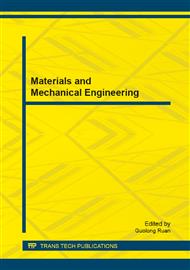p.44
p.54
p.61
p.70
p.77
p.83
p.87
p.94
p.101
Improving Properties of Rubberized Mortar with Polyacrylamide
Abstract:
The waste tire can be added to concrete to form a composite material, known as “Rubcrete”. However, addition of crumb rubber leads to degradation of physical properties of the concrete. In this study, by treating the crumb rubber with Polyacrylamide (PAM), we have improved properties of the rubberized mortar. Specifically, the compressive and flexural strengths of the specimen at 56 days were improved up to 19% and 27%, respectively. Dramatically, the anti-corrosion property of this new rubberized mortar is much superior to that of the original mortar. The addition of rubber also turned crack from fragility crack to ductility crack. To show the impacts of PAM modification, the specimens of rubberized mortar with and without PAM modification, were observed with SEM images. Experimental results showed that PAM treatment of crumb rubber is an effective means to improve the mechanical properties of the rubberized mortar; lends itself to possible commercial applications.
Info:
Periodical:
Pages:
77-82
Citation:
Online since:
February 2014
Authors:
Keywords:
Price:
Сopyright:
© 2014 Trans Tech Publications Ltd. All Rights Reserved
Share:
Citation:


